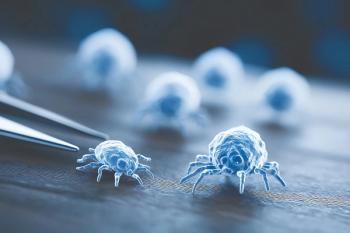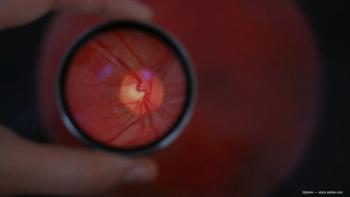
- Ophthalmology Times: Feb. 15, 2020
- Volume 45
- Issue 3
New techniques probed for managing dry eye disease
While
Related:
According to Audrey R. Talley Rostov, MD, the increased diagnosis of dry eye disease among younger patients is increasing at an alarming rate, and parents should beware.
“We are seeing
With this in mind, it is more important than ever to establish effective treatments.
“The goals of therapeutic intervention are normalization of the tear film, decrease lacrimal gland and ocular surface inflammation, stimulate epithelial healing, and restore the normal neural feedback mechanism to the lacrimal glands,” Dr. Talley Rostov pointed out.
The treatment categories address
Related: Top questions about MGD treatment options answered
What’s new in treatments?
Blepharitis
Lid hygiene to treat anterior
The treatment of posterior blepharitis, topical anti-inflammatory drugs, such as the off-label use of azithromycin, cyclosporine, and lifitegrast (Xiidra, Novartis); microwavable lid masks. Newer technologies such as thermal pulsation and intense pulsed light (IPL) are available, according Dr. Talley Rostov.
Related:
Meibomian gland dysfunction
Thermal pulsation became available in 2011, and the technology has improved because of the introduction of several thermal pulsation devices. The devices are small, handheld, and less expensive. Studies have shown thermal pulsation to be efficacious with increased tear film break-up time and meibomian gland flow.
IPL, a non-laser light source that uses broad-spectrum light, destroys microvasculature and bacteria that introduce the inflammatory mediators to the meibomian glands and liquefies impacted meibomian glands. IPL has proven to be most successful for patients with advanced meibomian gland disease, telangectasias of the lid margins, and rosacea, according to Dr. Talley Rostov.
Related:
Aqueous deficiency
The newest approaches to improve lubrication of the ocular surface are ocular inserts and nasal neurostimulation, the latter of which involves internal and external electrical stimulation and pharmacologic nasal spray delivery that is in clinical trials.
More artificial tears, some of which are oil-based, have become available; and ocular surface tears can be preserved with the reintroduction of scleral lenses.
The real goal is treating the underlying inflammatory disease, which can be accomplished by using steroids, cyclosporine A, lifitegrast, autologous serum tears, amniotic membrane both cryopreserved and frozen, and omega 3.
Related:
Evaporative goblet cell and mucin deficiency
With the goal of replenishing goblet cells, cyclosporine A is useful based on phase III studies, lifitegrast based on its anti-inflammatory effects, and compounded vitamin A ointment are the key innovations. Scleral lenses are also useful.
Exposure keratopathy
Moist chamber goggles are an innovation in this area. However, patients also should take advantage of the tried-and-true treatments such as lubricating gel, lid tape, lid surgery, gold eyelid weights, and tarsorraphy.
A number of overlapping factors can be at work in dysfunctional tear syndrome that can exacerbate or masquerade as dry eye tear syndrome. These include superior limbic keratoconjunctivitis, topical medication toxicity, superficial punctate keratitis, mucous fishing syndrome, contact lens-related toxicity, chemical toxicity, allergic and atopic conjunctivitis, conjunctivochalasis, and floppy lid syndrome.
New anti-parasitic drugs are being investigated to treat Demodex, but are not yet approved.
Audrey R. Talley Rostov, MD
E: [email protected]
This article is based on Dr. Talley Rostov's presentation at the Amererican Academy of Opthalmology 2019 annual meeting. Dr. Talley Rostov is a consult to Alcon, Allergan, Bausch + Lomb, and Novartis.
Articles in this issue
almost 6 years ago
3D printing in ophthalmologyalmost 6 years ago
Seeking the holy grail treatment for endophthalmitisNewsletter
Don’t miss out—get Ophthalmology Times updates on the latest clinical advancements and expert interviews, straight to your inbox.









































